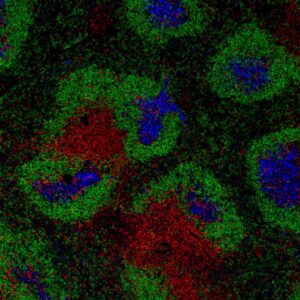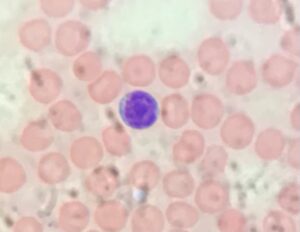For the past few months, we all increased our appreciation for the work done by scientists. But, a few of us might be thinking… “Come on, why is it taking so long to generate this vaccine?” I have to break the news and tell you that there are so many, SO MANY, aspects that have to be considered in order to generate a new vaccine. Therefore, I wanted to devote this post to start shining a light on the complexity of performing scientific research.

Media from Wix image gallery
So, if you are thinking about becoming a scientist to study the roles of the immune system in fighting viral infections, for example, you will first have to take a step back and figure out exactly how you will test all your hypothesis.
Before starting your experiments, you have to address what level of complexity you want for your analysis. For example, if you want to analyze the immune response against HIV in humans, it is easy to see why you can’t use humans for your experiments. Therefore you will need to use different models of infection, which will be determined based on the level of complexity required to answer your questions.
In vitro
The first model is called the in vitro system. For that, you would use your favourite cell lines. Think about cell lines as cells that were modified to allow scientists to cultivate them (make them grow) very easily. Yes, in this system we add cells to a flask and provide them with specific conditions (such as nutrients and temperature) which allow them to grow happily.
Let’s say for example that you would want to observe whether your favourite virus infects the lung. When using the in vitro system, it is important to remember that you will not have the complexity of the whole lung. You will need to select a very specific cell type that is present in this organ, for testing. Therefore, having a clear and precise question in mind is essential when choosing a specific cell line.
The great thing about the in vitro system is that it is very controlled. If you do everything exactly the same, today and tomorrow, you (in theory) should have the exact same result. Moreover, most cell lines are very easy to grow, therefore you can test many different questions in a short period of time. Of course, the trade-off is that an in vitro system is quite far from the “real life”. Nevertheless, many crucial questions can and should be first asked using the in vitro system.
Up to now, we have been talking about a single layer of your favourite cell growing in a dish (2D cultures). However, in order to increase the complexity of the in vitro system bringing a bit closer to “real life”, scientists have developed what is known as a 3D culture system.
In “real life”, the cells making up our organs are usually present within a matrix, known as the extracellular matrix (extracellular = outside the cell). In order to mimic this 3D environment, scientists have created a system in which cell lines are cultivated within a matrix inside a flask, allowing for a 3D aggregation to occur.
Using this technology, scientists can generate organoids, which are like tiny organs in a flask. This system promotes a higher level of complexity to the 2D in vitro system, allowing scientists to answer new sets of questions, which were at first impossible.
In vivo
However, as much as we try to increase the complexity of the in vitro system, it is still unfortunately impossible to mimic all the nuances of the in vivo system in a dish. The term in vivo is used to denote the utilization of animal models in scientific research. I truly hope that in the near future, we will drastically increase our technology to generate a highly complex and functional in vitro system, allowing us to truly decrease our usage of animal models. If you are reading this and have this drive in mind, we urge you not to stop!
In order to choose the correct animal model to answer our questions, many things must be first considered. For example, if you want to analyze the consequences of viral infection in the immune system, you first have to make sure that your animal model can be infected with the virus of choice.
Viruses are specific to a defined set of hosts, which means that a single virus will not infect all the possible animal models. Scientists can sometimes use a distinct virus, but with similar characteristics, as a backup plan if infection of the chosen animal model is impossible.
Side, but crucial, note: If you are infecting an animal model with virus x, and the animal doesn’t show any sign of “sickness”, it does not automatically mean that your animal model is not suitable for your research. Remember, the immune system is great at clearing viral infections. Therefore, your chosen animal model might be perfectly fine even in such cases.
In this scenario, you will need to do a deeper analysis. An easy way is to observe whether immune cells, such as CD8 T cells (the killer cells, remember?) are being activated. If yes, there is a great chance that your animal model is being infected with the virus of choice, even if the visual cues make you think otherwise.
Many immunologists use mice as their animal models. There are many characteristics of why mice are good candidates for research projects, however, there are always downfaults as well. The most trivial downfault, is that a mouse is not a human, and we would never attain such a level of complexity, but we can get very close.
Moreover, different from the in vitro system, mice and all other animal models have biological differences. Therefore, even if you do the same procedure to 2 different mice, you might still not get the exact same results, although you should definitely get a similar results pattern.
I believe that one of the best characteristics of why a mouse model is great for research is our ability to genetically modify a mouse to our favour. This means that we can change the DNA of a mouse to allow us to ask different questions, and test different hypotheses.
Let’s say you truly love protein A, and you have a feeling (not just a feeling but a complete and well-thought-out hypothesis) to suggest that this protein is crucial for immune cells to fight viral infections. What do you do? Easy, you take a “normal” mouse (a mouse that was not genetically modified, also called wild type or WT for short), and you change the DNA of this mouse so it will not express your protein of interest (protein A). You now have a mouse that lacks protein A (we call this mouse knockout or KO, for short). OK, I say easy, but such an experiment can take years (yup, been there), but remember, persistence is the key to science!
Now, you can infect the WT mice (the “normal” mice which has protein A) and your KO mice (your new genetically modified mice lacking protein A) with the virus of your choice. You can now analyze different aspects (such as weight loss, the activation of different immune cells, etc) to figure out if protein A is important to help a mouse to be protected from such infection.
This experiment is crucial since many of the observations obtained from this experimental setup can help scientists understand what exactly protein A does. If protein A was found to be crucial to prevent viral infection, this mechanism could be further explored as a potential therapeutic.
I hope you can have a better grasp of HOW MANY questions scientists have to ask before even thinking about starting a single experiment. This thought process is vital to ensure the correct question can be answered. Although I have used viral infection as a way to explain such concepts, these steps are applied to many other questions. From studying how cancer cells develop to the effects of many autoimmune diseases.
The beauty of being a scientist is that you are called to put all the puzzle pieces together, in order to design the best experiment you can. One that would not only answer your questions but hopefully generate even more questions to continue the progress of science. I mean, is there anything cooler than that?
See you next Tuesday!
From your immunologist – in training,
Stefanie Valbon
I would like to acknowledge the invaluable role that each animal has provided in advancing our scientific knowledge in order to improve people’s health. Their immense contribution was essential to allow us to get to where we are, and for that, we should all be truly thankful.



